Galaxidi appears at first as a sleepy coastal town. Located on the northern shore of the Gulf of Corinth, Galaxidi is a picturesque settlement of 2,000 inhabitants in central Greece. However, despite its size, the town enjoys a strategic position on the bay of Itea and has a long maritime history. Therefore, it doesn’t come as a surprise that the town hosts the beautiful Nautical Museum of Galaxidi.
To get a better idea of the town’s background, the boom of the Galaxidi navy began after the Treaty of Passarowitz in 1718. It was this treaty that led to the retreat of the Ottomans in Europe. Soon, a big part of the trade to the Peloponnese and Western Greece was handled through the small town. At this time, Galaxidi became one of the most important ports of mainland Greece.
By 1803 the Galaxidi nautical fleet numbered more than 50 vessels, a significant number for the era. Moreover, the boats starting from Galaxidi reached the most famous commercial ports of the Mediterranean Sea, like Marseille, Istanbul, and various ports in Spain and Italy. Last but not least, Galaxidi’s navy played an essential role in the Greek War of Independence (1821) due to its fleet and its inhabitants’ self-denial.
Today, Galaxidi is a quiet town in Fokida (Phocis), attracting visitors mainly during the summer. However, its proximity to the archaeological site of Delphi makes it a great place to stay overnight if you’re visiting the region.
So, in this article, you will see several photos from the Nautical Museum of Galaxidi, together with information about the exhibits. Moreover, at the bottom of this post, you’ll find the best places to stay in Galaxidi. Let’s start.
*Some of the links are affiliate links. It means that if you buy something, I might earn a small commission at no additional cost to you.
The Nautical Museum of Galaxidi: photos and info
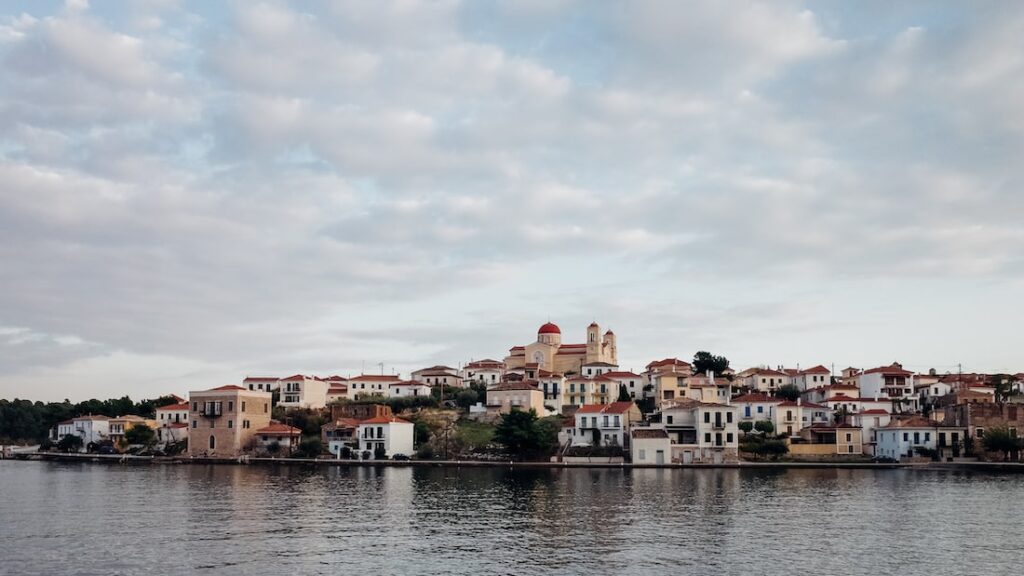
The Nautical Museum of Galaxidi (also known as the Maritime Museum of Galaxidi) was established in 1928. The museum is hosted in a beautiful building dating back to 1870, which initially served as the Town Hall. Efthimios Vlamis, a local doctor, envisioned a museum dedicated to the naval history of Galaxidi. Vlamis served as Galaxidi’s mayor for several years, and his family was one of the most important in the area.

The idea of a naval museum injected enthusiasm into the local population. The locals embraced the project and donated heirlooms that decorated their homes for decades. The initial collection of the nautical museum consisted of paintings, nautical instruments, tools, and nautical maps.
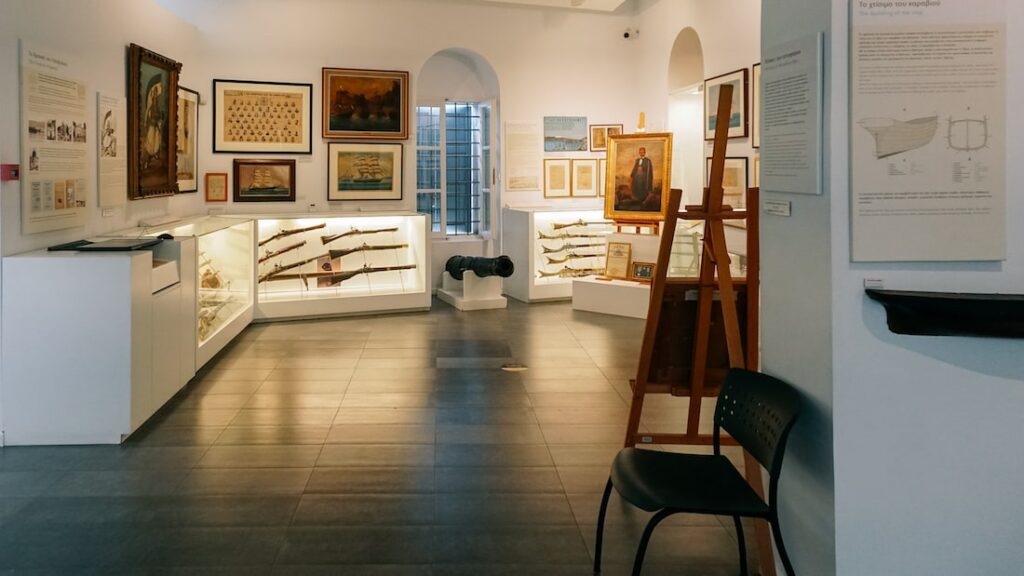

One of the most iconic Greek painters of the 20th century, Spyros Vassiliou, was born in Galaxidi. He was actually the man who supervised the paintings’ placement together with the installation of the nautical objects. Being one of the most prominent sons of Galaxidi, Vassiliou has a room dedicated to his oeuvre. There are currently six of his paintings on display at the Nautical Museum of Galaxidi.
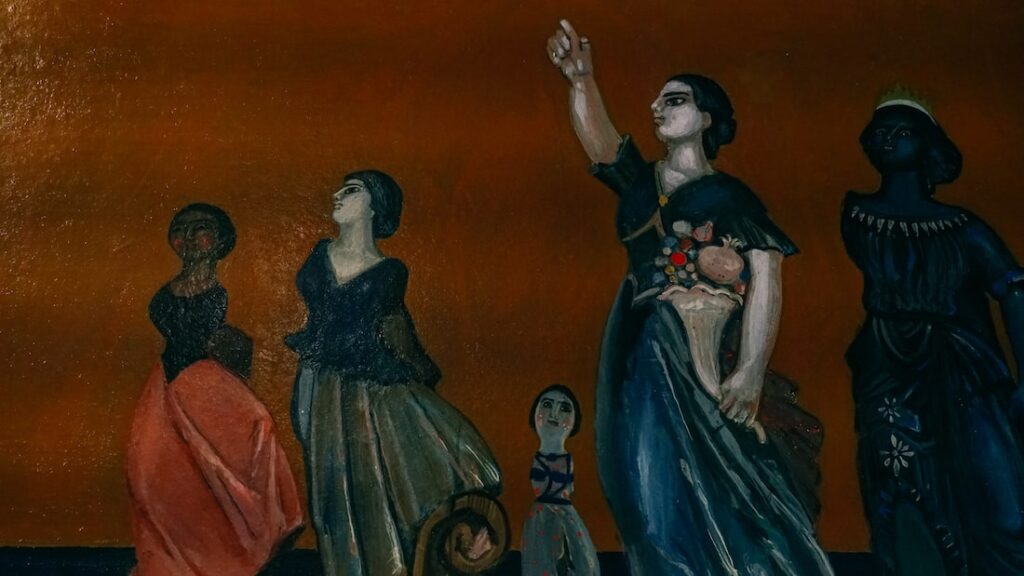
The museum’s most important exhibits are paintings of sailing ships, figureheads, and nautical instruments. You can also see several paintings of Petros Petrantzas, a local artist and captain. There are also plenty of miniatures, and you can get a glimpse of Galaxidi’s fleet through the centuries.

Obviously, a big part of the Nautical Museum of Galaxidi deals with nautical instruments. These are all donations from the local population, and they give a unique perspective on the city’s past. Most of them are 19th—and 20th-century items, and they enrich the maritime collection of the museum. Among them, you can see sextants, compasses, barometers, binoculars, and several nautical maps and logs.

However, one of the most remarkable items in the collection is the manuscript of the “Galaxidi Chronicle.” Written by a Christian monk named Efthimios and published by Konstantinos Sathas in 1865, the Galaxidi Chronicle covers almost eight centuries. Specifically, the manuscript provides information about life in Galaxidi between the 1oth and 17th centuries. The manuscript was discovered in the ruins of a Byzantine church in 1864.
Akroprora: the stunning figureheads
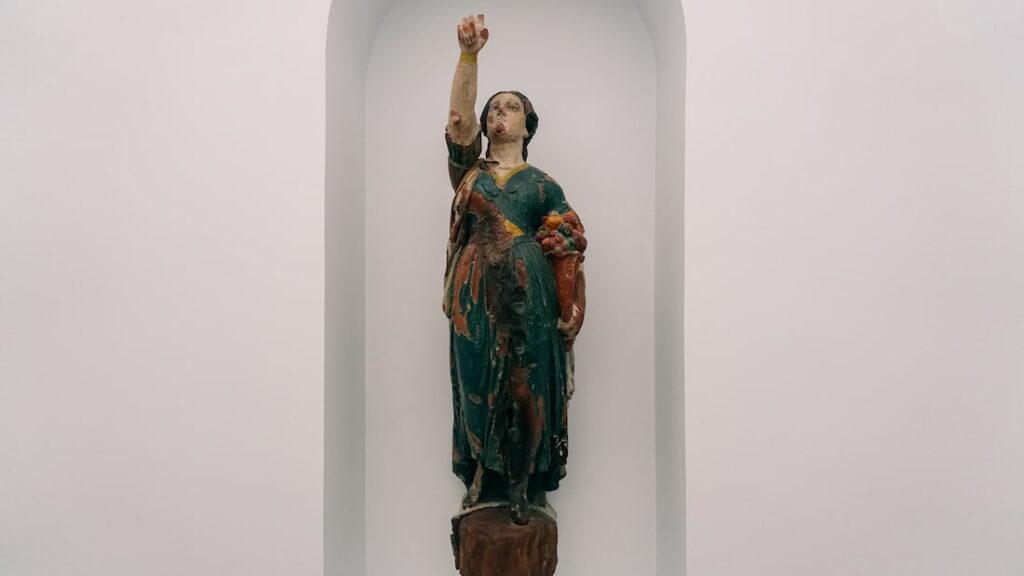
The name of the four figureheads you’ll see while walking through the nautical museum is “Akroprora.” The ones displayed on the museum belonged to ships constructed in Galaxidi. Locals believed that “Akroprora” brought good luck and safe travels to the boat’s owner.
In general, the figureheads were made of wood and decorated the ship’s bow. Despite being primarily decorative items, the figureheads were an integral identity component, signifying the importance of the vessel and its captain. Ships without figureheads were assumed to be insignificant. The shipwrights supervised the figureheads’ creation and used the same wood they used in the boat’s hull.
The Akroprora have been known since Greek antiquity. However, back then, they featured symbolic figures to intimidate enemies or appease the sea’s wrath. It was only after the Middle Ages that the figureheads started depicting warriors or women, mainly mermaids.
The Museum’s Archaeological Collection
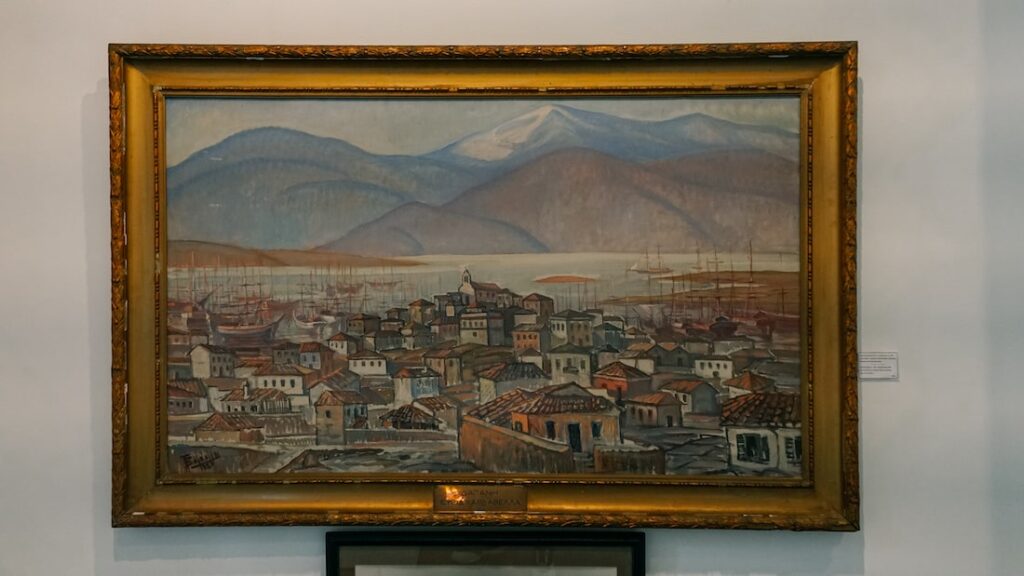
Four years after the establishment of the Nautical Museum in 1932, a group called “Galaxidi Youth” created the Archaeological Collection, which is also housed in the museum’s buildings.
The museum’s archaeological collection includes coins and a section dedicated to the Greek War of Independence. Some of the coins date back to the 3rd century BC, while the Greek War exhibits highlight the town’s importance. Galaxidi rebelled against the Ottomans on 25-26 March 1821, second only to Amfissa in central Greece. The locals’ dedication to the War was so high that the Ottomans destroyed Galaxidi three times.
Finally, when exiting the Nautical Museum of Galaxidi, you’ll come across one of the oddest exhibits. It is a letter from the prime minister of New Zealand thanking the people of Galaxidi for their help. During World War II, the soldiers of New Zealand remained stranded in Greece after the Nazi occupation, and the citizens of Galaxidi took good care of them.
Info about the Nautical & Historical Museum of Galaxidi
The Galaxidi Maritime Museum is open from Tuesday to Sunday between 8:30 and 15:30. The museum is closed on Mondays. A ticket for the exhibition costs 5 euros (reduced 2,5 euros). You can find the nautical museum’s exact location on Google Maps here.
Where to stay in Galaxidi, Greece
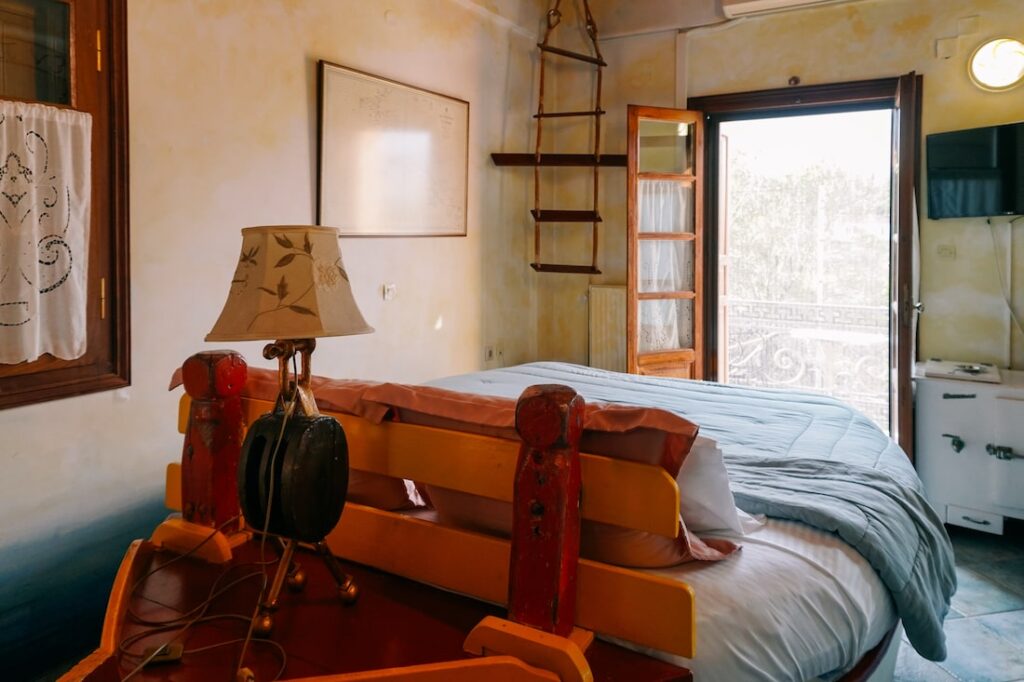
Galaxidi is an excellent base for your journey if you’re touring this side of Greece. The town is just 40 minutes away by car from Delphi, and it’s a great option if you prefer milder weather. Both Delphi and nearby Arachova are at an altitude, and the weather is significantly colder, especially at night. On the other hand, Galaxidi is straight at sea, and you can enjoy great weather even during the winter.
When I visited Delphi, I used Galaxidi as my base, and I had a great stay. The town is quiet, and it’s beautiful to dine or drink next to the sea. Apart from the Naval Museum of Galaxidi, there’s not much more sightseeing to do. However, the small streets are picturesque, and the promenade next to the sea is unique. Last but not least, if you love cats, Galaxidi has plenty of them, and you’ll see them walking everywhere on the streets.
The best hotels in Galaxidi
Archontiko Art Hotel. That’s the place I chose for my stay in Galaxidi. It’s a fantastic hotel on the town’s edge, just a few steps away from the sea. The rooms’ decoration comes from the town’s nautical tradition, and most of them have balconies. The owners serve homemade breakfast in the garden. Last but not least, the Wi-Fi is reliable, and the prices are reasonable. Book your room at Archontiko Art Hotel here.
Ganimede Hotel. That’s another great option in the heart of Galaxidi. Ganimede Hotel is in the city’s heart and offers spacious rooms and delicious breakfast. This 19th-century mansion has a private garden and a patio. See prices and availability for Ganimede Hotel.
Nostos Hotel. The Nostos Hotel is just 3 minutes away from the beach. Set in a beautiful building dating back to 1870, it features lovely rooms and serves breakfast daily. It also has a beautiful garden, and the town’s center is just a few steps away. See the prices for the Nostos Hotel.
Final thoughts about the Nautical Museum of Galaxidi

The Nautical Museum of Galaxidi is one of these hidden gems you always hope to discover while traveling. The fact that this is the oldest maritime museum in Greece gives a special touch to it. The exhibits narrate a very local story, and some of them will fascinate you.
If you’re on a road trip around Greece or just visiting Delphi, make sure to stop at Galaxidi. This small coastal town will be one of the nicest memories of your journey, especially if you stay here overnight.
More articles about Greece: Delphi guide, Eleusinian Mysteries, Mycenae, Epidaurus, Ancient Corinth, Palamidi Fortress
Pin it for later

Share this article with your friends if you enjoyed reading about the Nautical Museum of Galaxidi.
Last Updated on April 18, 2024 by George Pavlopoulos


The only recollections I have of visiting a nautical museum is in South Australia, where the Star of Greece figurehead is located. I found the South Australian Maritime Museum to be very fascinating. I have also visited the Vasa museum in Sweden and saw a restored Viking ship (Vasa), which was extremely impressive!
One day I’d like to visit Galaxidi to see some things inside the museum. Do they have tour guides who can show you around the Nautical Museum of Galaxidi? It would be so much better if someone could tell you stories as you walk around.
I’ve also visited the Vasa Nautical Museum in Sweden, John and I found it fascinating. In general, I have only seen 2-3 maritime museums, so I’m not an expert. The Nautical Museum of Galaxidi is tiny in comparison to the others. However, I found it beautiful, and you get an idea of how life unfolded more than a century ago. It’s a small (but picturesque) town, and I think it’s a luxury that a museum like this exists.
I’m not sure if they offer guided tours. There are just 2-3 employees in the nautical museum, but I’m pretty sure that if you ask them for a tour, they won’t deny it. On the contrary, I believe they will be delighted. In such places in Greece people are always happy when they’re asked about their birthplace and its history. The safest option is to contact them a couple of days before visiting it and ask for a tour. I’m sure they will arrange something for you.
Galaxidi has a long maritime tradition, and it was also one of the most legendary places in the Greek War of Independence (1821). I think you’ll love it, John. Especially if you visit Delphi, the scenic 40-minutes drive to Galaxidi is a must.